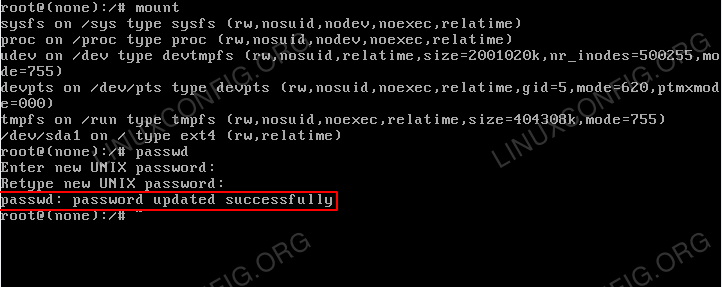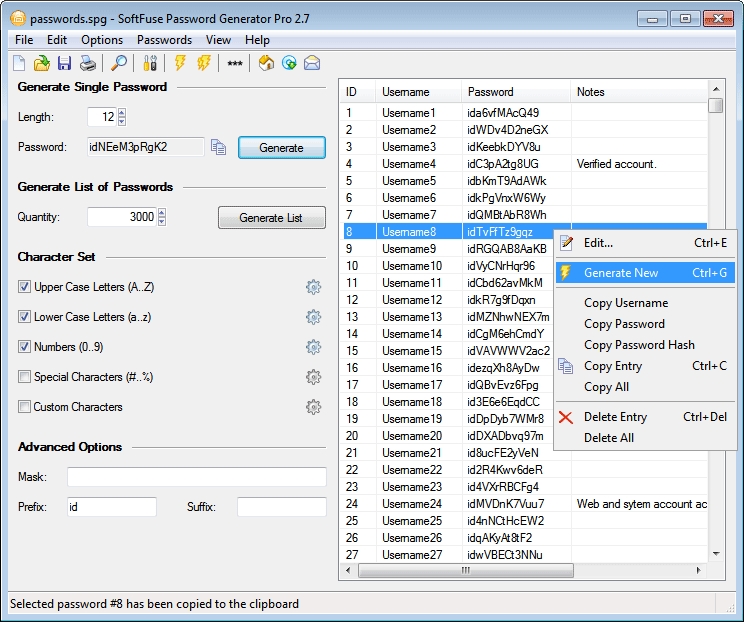

- #LINUX PASSWORD GENERATOR COMMAND LINE NUMBER OF BITS HOW TO#
- #LINUX PASSWORD GENERATOR COMMAND LINE NUMBER OF BITS FREE#
Examples of viewing free disk space, viewing in human readable format, showing filesystem types and including and excluding specific filesystem types.Note that you are limited to a particular set of 64 characters ( A–Z, a–z, 0–9, + and /) due to base64 encoding on the output.Ĭreate a Bash shell function to generate a random password with a defined length. Tutorial on using df, a UNIX and Linux command for reporting file system disk space usage. Linux and Unix df command tutorial with examples These functions include printing FRU information, LAN configuration, sensor readings, and remote chassis power control.
#LINUX PASSWORD GENERATOR COMMAND LINE NUMBER OF BITS HOW TO#
Examples of printing the current working directory, avoiding symlinks and how to get the current working directory in shell scripts.Ĭonfiguring and working with Cloudfront LogsĮxample of how to setup Cloudfront to log to S3, enable log rotation and how to download and work with combined Cloudfront log files. DESCRIPTION This program lets you manage Intelligent Platform Management Interface (IPMI) functions of either the local system, via a kernel device driver, or a remote system, using IPMI v1.5 and IPMI v2.0. Tutorial on using pwd, a UNIX and Linux command for printing the name of the current working directory. This command line interface has intelligent tab completion and full. Linux and Unix pwd command tutorial with examples You can use Proxmox VE on a single node, or assemble a cluster of many nodes. You can edit it here and send me a pull request. Same so when a hashing algorithm changes it is a drop-in replacement. Sha sha1sum sha224sum sha256sum sha384sum sha512sum shasumįor each of these hashing algorithms the command options and behaviour is the Manually by comparing the output of sha1sum with the published message The file will normally publish a SHA-1 message digest and this can be checked If not file has been provided with the download the author of Option and pass the SHA-1 checksum file that corresponds to the file or files If a SHA-1 file has been provided with a download this can be used to check Matches the one published by the author on any webpage relating to the download. It is worth verifying that the published SHA-1 also When run manually in a terminal it will prompt for a password: openssl genpkey -aes-256-cbc -algorithm RSA -out /etc/ssl/private/key. Python3s crypt.mksalt also allows those to be specified. like specifying the number of rounds as well. Also password managers such as KeePassX provide a passwort generator (but it does not focus on commandline usage nor on pronouncable passwords). apg - generates several random passwords. gpw - program to generate pronounceable passwords. passing -1 will generate an MD5 password, -5 a SHA256 and -6 SHA512 (recommended) Method 2 (md5, sha256, sha512). But there are many such tools available: pwgen - generate pronounceable passwords. Normally the canonical author of a file will also publish the Is there a command-line tool that takes a password and generates an /etc/shadow compatible password. Receiving the file to verify (to some extent) that the file has not been

If the file somefile.txt is to be distributed on the Internet the accompanying

The SHA-1 will be printed to standard output printing first the SHA-1ĭa39a3ee5e6b4b0d3255bfef95601890afd80709 somefile.txt

To get the SHA-1 of a file pass the path of a file to the sha1sum command. Secure against well funded opponents it is still widely used to verify As such the sha1sum command can be used toĪttempt to verify the integrity of a file. It be compared to a published message digest to check whether the file is The sha1sum command computes the SHA-1 message digest of a file. Examples of reading a SHA-1 message digest, writing a SHA-1 message digest to a file, and checking a SHA-1 message digest. Tutorial on using sha1sum, a UNIX and Linux command to compute and check a SHA-1 message digest. Linux and Unix sha1sum command tutorial with examples


 0 kommentar(er)
0 kommentar(er)
